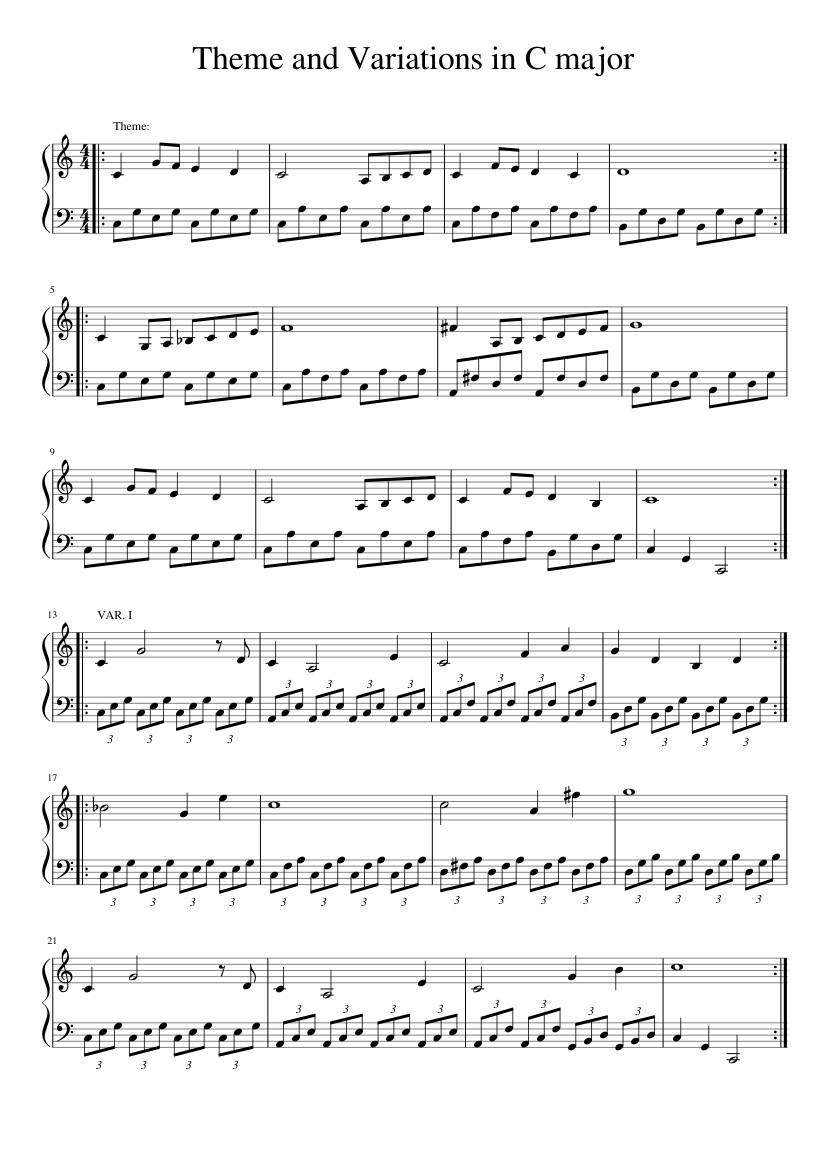Beginner's Corner: Theme and Variations
Musical Form
Music is usually written with a specific form. This means that there is a basic structure that the composer uses. For example, a one-bedroom apartment has a basic form. It might have a living room, kitchen, bathroom, and bedroom, but within that form, the architect can adjust the size, shape, and layout of the rooms. Music is the same way. A composer takes a basic form and adjusts it to suit his or her vision of the music.
Theme and Variations
This is a common form that you might have already played if you learned "Twinkle Twinkle Little Star" with variations. A theme is a basic music idea or melody that the composer bases the piece on.
A variation is when something is different from the original. A recipe for chicken noodle soup, for example, might use carrots but the cook decides to make a variation and uses potatoes instead.
There are many ways to vary music. The composer can change the rhythm, melody pattern, or tempo to name just a few.
In complex works, the theme music is introduced, and then the composer takes the melody and twists it in some way for the variation. Sometimes the melody is hidden in chords or arpeggios or the key changes. It can be very difficult to find the original melody in very complicated variations.
Theme and Variations are a way for composers to add interest to their compositions and explore a musical idea. It is found in almost every type of music from sonatas and chamber music to symphonies and songs.

